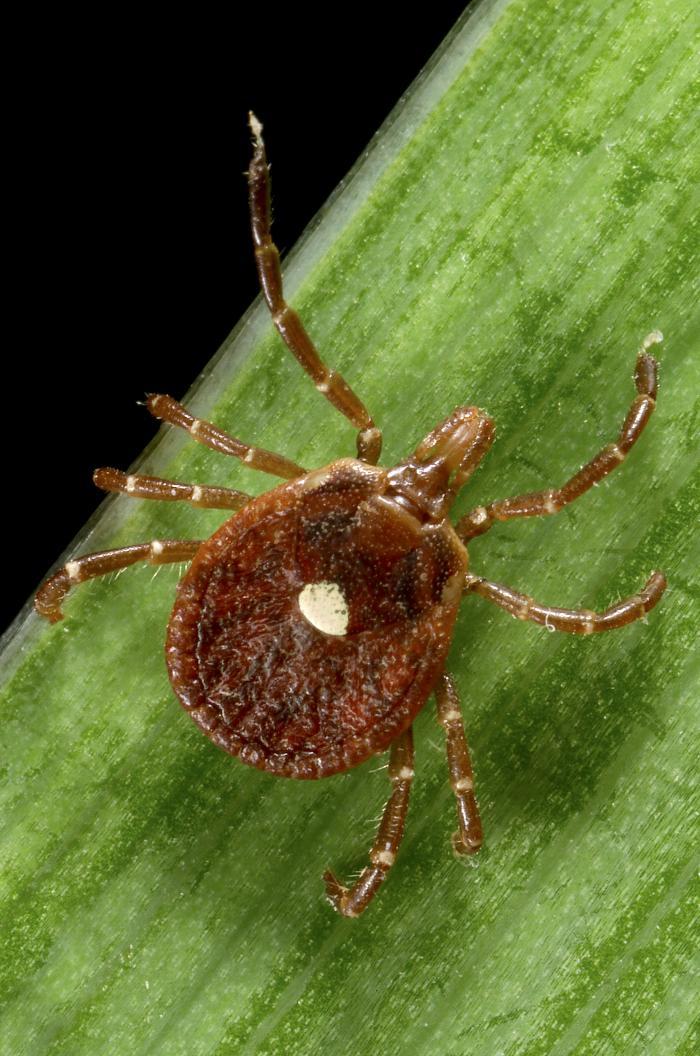Researchers have solved part of a medical mystery about a new virus that infected two Missouri men in 2009, confirming the pathogen in lone star ticks near where the patients were infected, then hospitalized, after they were bitten by ticks, according to a study today.
The hunt for the tick that possibly carried the new Heartland virus included collecting 56,428 ticks by combing through brush with flannel pads mounted on bamboo poles, using carbon dioxide-emitting dry ice to lure ticks into plastic containers, and plucking the insects from horses and dogs.
The research team, which included investigators from the Centers for Disease Control and Prevention (CDC) and Missouri Western State University, reported their findings today in the latest issue of the American Journal of Tropical Medicine and Hygiene. The journal is published by the American Society of Tropical Medicine and Hygiene (ASTMH).
Henry Savage, PhD, lead author of the study and research entomologist at the CDC division of vector-borne diseases in Fort Collins, Colo., said in an ASTMH press release that 10 tick samples were positive for Heartland virus, 9 from the property of one of the patients and 1 from nearby conservation lands.
"It's pretty strong evidence that the virus is persisting from season to season in tick populations and that these ticks play an important role in disease transmission," he said.
Humans are likely to be infected if they are bitten by a tick that carries the virus, Savage said, noting that one of the patients remembered pulling dozens of ticks off his body each night before bed.
The men's infections and the identification of the new virus, a new member of the phlebovirus genus, first came to light in an August 2012 issue of the New England Journal of Medicine. The new tick disease stands apart from others such as Lyme, ehrlichiosis, and Rocky Mountain spotted fever because it is caused by a virus rather than bacterium and does not respond to antibiotics.
The research team reported that the new disease is similar to severe fever with thrombocytopenia syndrome (SFTS), another viral disease recently discovered in China that appears to be tickborne and may also spread from person to person.
The Heartland virus in 2009 caused severe illness in the two men, both farmers from northwestern Missouri. One was a previously health 57-year-old who was hospitalized for 10 days after a tick bite. The other was a 67-year-old with type 2 diabetes who was hospitalized for 12 days after receiving numerous tick bites.
Both had fever, fatigue, anorexia, and non-bloody diarrhea. One of the men had a headache. Both recovered, but one reported lingering fatigue and headache in the 2 years after the infection.
So far no other Heartland virus infections have been reported, but CDC and the Missouri Department of Health and Senior Services are working to identify other possible cases.
Lone star ticks, identifiable by a single white spot on the females, are common in the area and in many other parts of the country. So far the Heartland virus hasn't been found in tick populations outside of northwestern Missouri.
Savage said in the statement that another research team is testing animals in the area to identify the reservoir hosts for the virus.
David H. Walker, MD, a tick-borne disease researcher who is president of the ASTMH, said in the statement that the research shows why the nation must continue to invest in exploring rare infectious diseases. "It is only by getting trained experts into the field and doing the necessary work of collecting and testing thousands of specimens, as these scientists did, that we can be one step ahead of what could become another serious health threat carried by ticks."
Savage HM, Godsey MS Jr, Lambert A, et al. First detection of Heartland virus (Bunyaviridae: Phlebovirus) from field collected arthropods. Am J Trop Med Hyg 2012 Jul 22 [Abstract]
See also:
Jul 22 ASTMH press release
Aug 30, 2012, CIDRAP News scan "Two severe illnesses in Missouri caused by novel virus"











